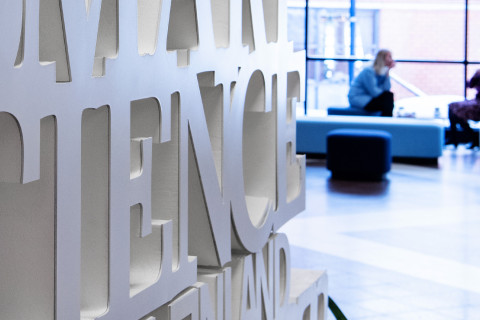The doctoral dissertation in the field of Molecular Medicine will be examined at the Faculty of Health Sciences at Kuopio campus. The public examination will be streamed online.
What is the topic of your doctoral research? Why is it important to study the topic?
My topic is angiogenesis. More specifically, I studied mechanistic and functional aspects of sprouting angiogenesis. Angiogenesis is a tightly regulated event in a healthy body, however in diseases such as cancer and ischemia this regulation is altered and we see abnormal or insufficient angiogenesis. It is important to understand the mechanistics and functions in order to find needed therapeutic approaches for each disease. In the case of cancer for example, by triggering hypoxic response, tumour tissue transitions the tissue microenvironment into a highly vascularized tumour microenvironment. In this case, anti-angiogenesis approach helps the normalization of the vessel network to be able to use proper drug treatment to the patients. Another example is myocardial ischemia. In that case, because of limited circulation, there is not enough oxygen and nutrients feeding the heart. If not treated, this could end in myocardial infarction (heart attack). For this case, a pro-angiogenic approach could be used to treat the patients. The importance of my study is that it focuses on the epigenetic approach for anti- and pro-angiogenesis therapies.
What are the key findings or observations of your doctoral research?
We enhanced and evaluated an in vitro assay platform utilizing immortalized endothelial cells and fibroblasts for large-scale drug testing. Through this platform, we scrutinized a focused epigenetic drug library and pinpointed two promising candidate drugs for further evaluation as therapeutic options. Furthermore, we devised an image analysis tool tailored for assessing 3D endothelial sprouts. Within this framework, we introduced a novel approach to endothelial lumen formation. This aspect holds significant interest in blood vessel development, delineating the distinction between functional and non-functional vessels. The lumen, created by endothelial cells during the maturation phase of angiogenesis, constitutes the space between these cells. A mature blood vessel exhibits an organized arrangement of endothelial cells, facilitating proper blood flow within.
How can the results of your doctoral research be utilised in practice?
We identified two epigenetic drugs as candidates for therapeutic use. One of them is triggering angiogenesis response and can be used in a pro-angiogenic treatment such as in the case of cancer. The other one is inhibiting angiogenic response which can be used in anti-angiogenesis treatment as in the case of myocardial ischemia. Both drugs were tested for their cytotoxicity profiles, however, further studies are of course needed before proceeding to clinical use.
Another result we produced was an image analysis tool called SproutAngio for measuring the vasculature. We have tested our tool both in a 3D functional angiogenesis assay and also in a vascular malformation retina model. It successfully quantified the differences between the control and disease samples. Our tool provides an automated quantification of vascular parameters and a practical solution for handling large datasets.
What are the key research methods and materials used in your doctoral research?
Fibrin bead assay is the key experimental model I used during my doctoral research. It is an in vitro model for co-culturing endothelial cells with fibroblasts and lets us test anti- and pro-angiogenic therapeutics in a 3D system. It is beneficial to use it because it provides a better mimic to the native extracellular environment. Endothelial cells interact with neighbouring cells and the extracellular matrix in a 3D environment. The results we obtain from this assay are significantly different from often used drug screening assays such as 2D vibility assay and VEGF-A ELISA. Confocal microscopy imaging and image analysis are also biggest parts of my study. We certainly improved the previous image segmentation methods for fibrin bead assay analysis. We compared the accuracy of measurements and SproutAngio showed more accurate measurements with the dataset we used for endothelial sprouting.
The doctoral dissertation of Mustafa Beter, MSc, entitled Angiogenesis: Assay Development, Analysis and Epigenetic Modulation will be examined at the Faculty of Health Sciences. The Opponent in the public examination will be Professor Adrian Harris of the University of Oxford, and the Custos will be Professor Seppo Ylä-Herttuala of the University of Eastern Finland.




